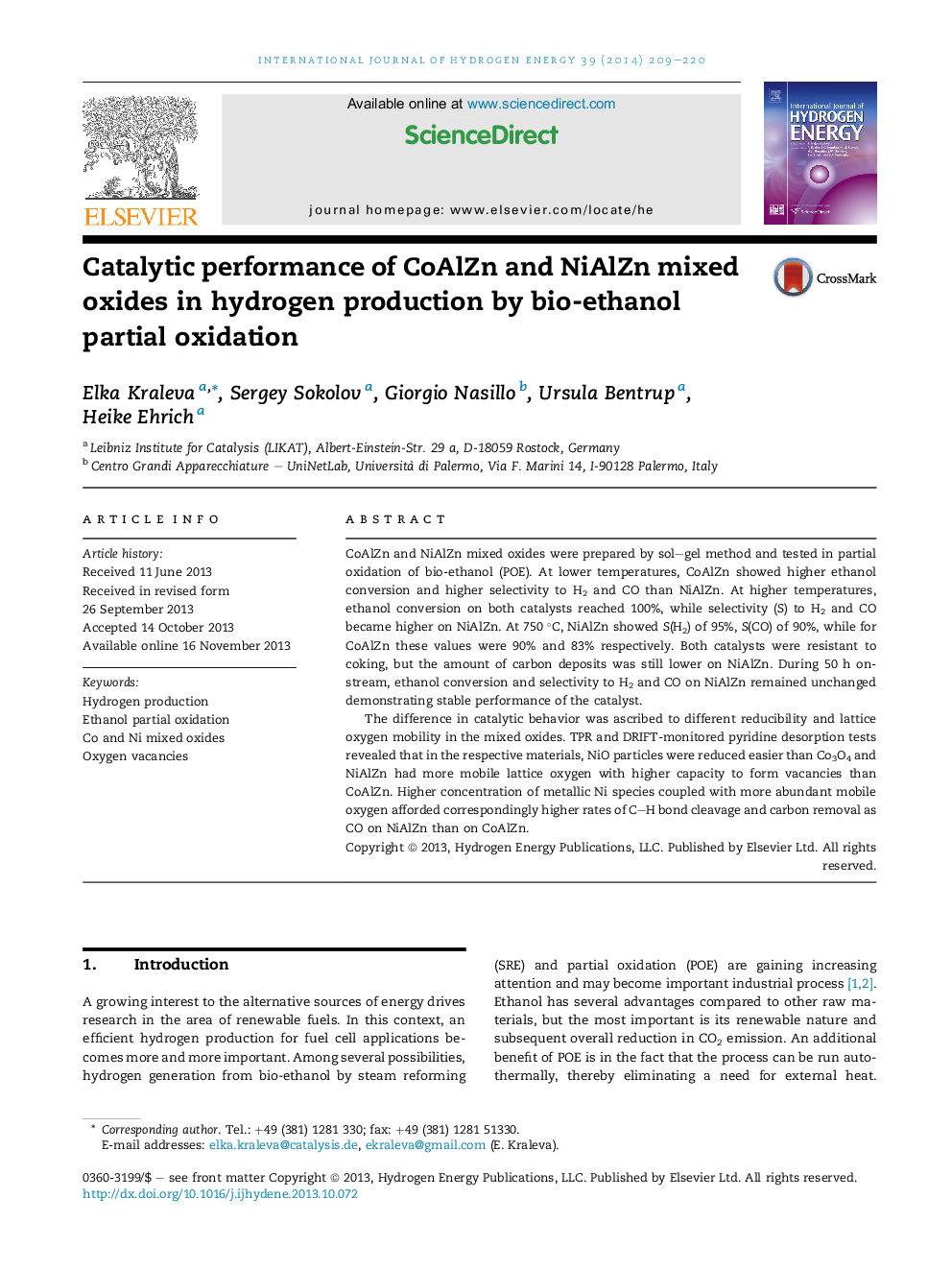| کد مقاله | کد نشریه | سال انتشار | مقاله انگلیسی | نسخه تمام متن |
|---|---|---|---|---|
| 1273933 | 1497508 | 2014 | 12 صفحه PDF | دانلود رایگان |

• NiAlZn and CoAlZn oxides prepared by citric method tested in ethanol partial oxidation.
• NiAlZn was reduced at lower temperature and had more mobile lattice oxygen.
• In 600–750 °C range, NiAlZn was more selective to CO and H2 and deposited less carbon.
• Better reducibility of NiAlZn drives H2 formation via C–H bond cleavage on metallic Ni.
• Higher oxygen mobility and vacancies concentration enhances removal of carbon as CO.
CoAlZn and NiAlZn mixed oxides were prepared by sol–gel method and tested in partial oxidation of bio-ethanol (POE). At lower temperatures, CoAlZn showed higher ethanol conversion and higher selectivity to H2 and CO than NiAlZn. At higher temperatures, ethanol conversion on both catalysts reached 100%, while selectivity (S) to H2 and CO became higher on NiAlZn. At 750 °C, NiAlZn showed S(H2) of 95%, S(CO) of 90%, while for CoAlZn these values were 90% and 83% respectively. Both catalysts were resistant to coking, but the amount of carbon deposits was still lower on NiAlZn. During 50 h on-stream, ethanol conversion and selectivity to H2 and CO on NiAlZn remained unchanged demonstrating stable performance of the catalyst.The difference in catalytic behavior was ascribed to different reducibility and lattice oxygen mobility in the mixed oxides. TPR and DRIFT-monitored pyridine desorption tests revealed that in the respective materials, NiO particles were reduced easier than Co3O4 and NiAlZn had more mobile lattice oxygen with higher capacity to form vacancies than CoAlZn. Higher concentration of metallic Ni species coupled with more abundant mobile oxygen afforded correspondingly higher rates of C–H bond cleavage and carbon removal as CO on NiAlZn than on CoAlZn.
Figure optionsDownload as PowerPoint slide
Journal: International Journal of Hydrogen Energy - Volume 39, Issue 1, 2 January 2014, Pages 209–220